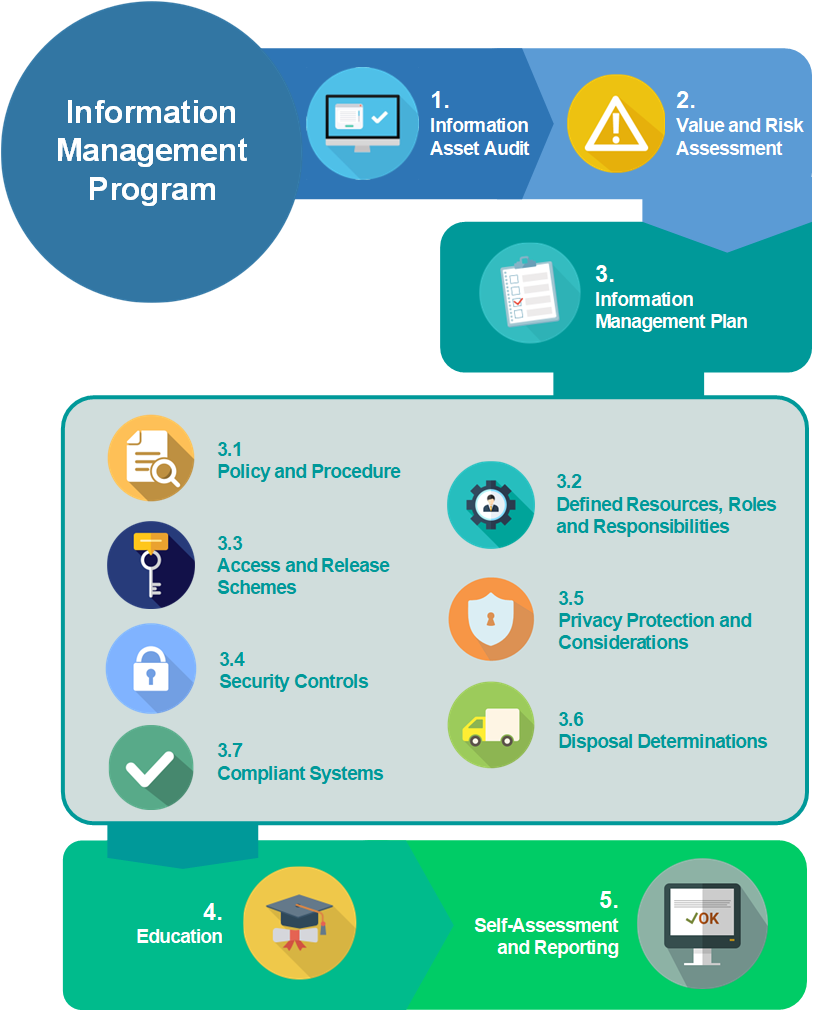The Information Management Standard prescribes the required elements for a information management governance model, described here as a Program.
The relevant components of the Program are outlined below:

There are a number of steps to follow to develop and implement a Program.
1. Information Asset AuditUndertake an information asset audit to identify what information assets are held by your agency. The identified information assets must be linked back to the business activities and functions. |
2. Value and Risk AssessmentAssess and value what information should be created to support your agency’s business and regulatory requirements. To do this, consider legal and regulatory requirements, associated risks and business objectives. This is known as a value and risk assessment. Identify and manage risks associated with not creating information to support requirements. |
3. Information Management PlanDevelop an Information Management Plan. An Information Management Plan provides practical direction for implementing a Program. The Plan should be based on the outcomes of the information asset audit and value and risk assessment and identify information priorities. |
4. EducationInduct and train your agency staff on the Program. A large part of the success of a Program relies on the commitment of staff to information management policies and procedures and an awareness of their information management responsibilities. Educating staff in the value and management of information is key to fostering a culture of good information management. |
5. Self-assessment and ReportingYou need to continue to formally assess and review the Program using the Self-assessment Tool. This assessment can also assist agencies to understand gaps in their Program and can be used as a first step in the review of the Program. |
Sections 1-5 are in typical order of action but there is flexibility in how you might undertake them. For example:
- some elements may already be in place and only require review
- some elements can be undertaken simultaneously
- risk or regulatory requirements may dictate a focus on one specific element.
Together, these steps will assist your agency to develop a clear strategic direction for the management of information assets as well as foster a good information management culture with a view towards continuous improvement.
A Program should support broader strategic and corporate goals and objectives, carrying the same executive level commitment.

